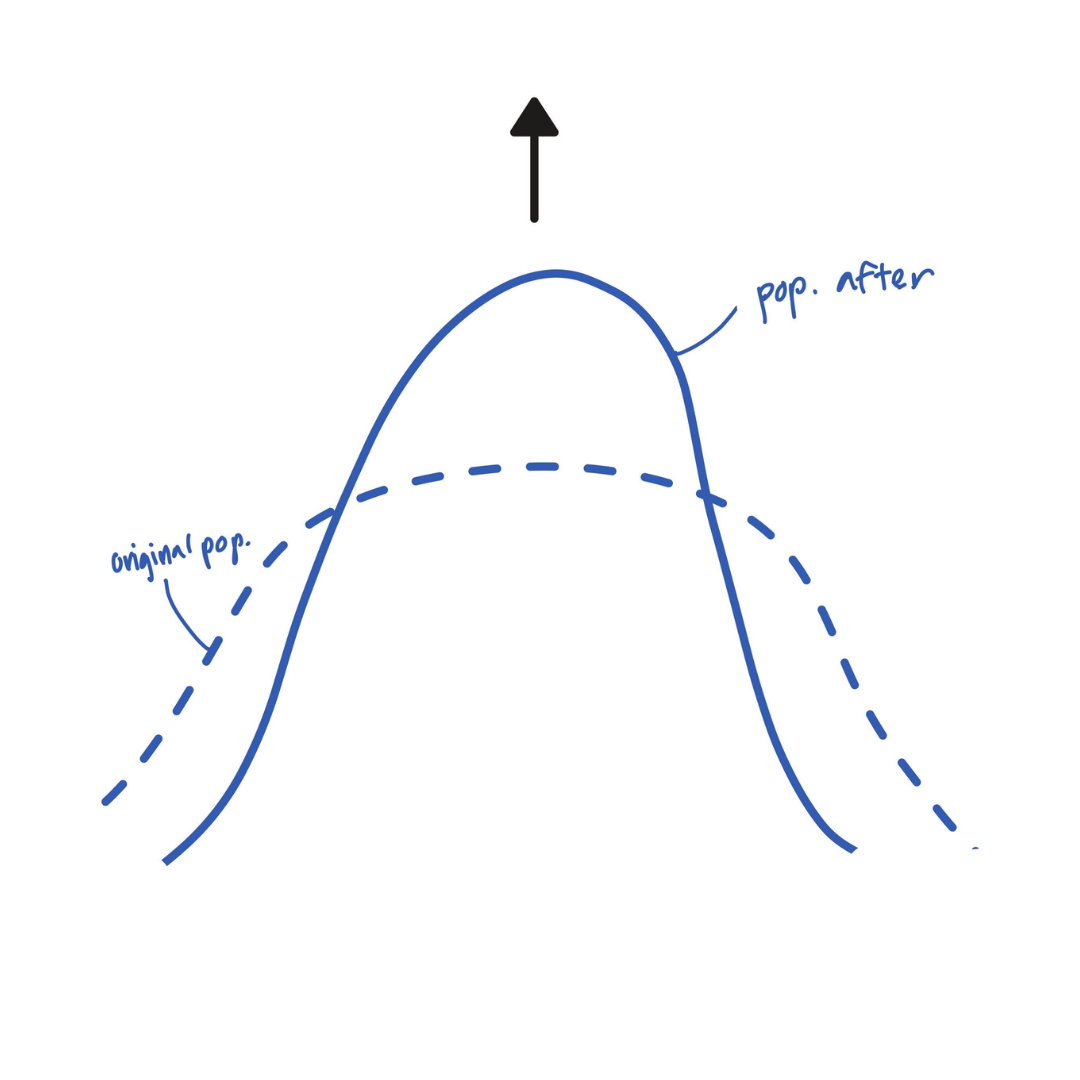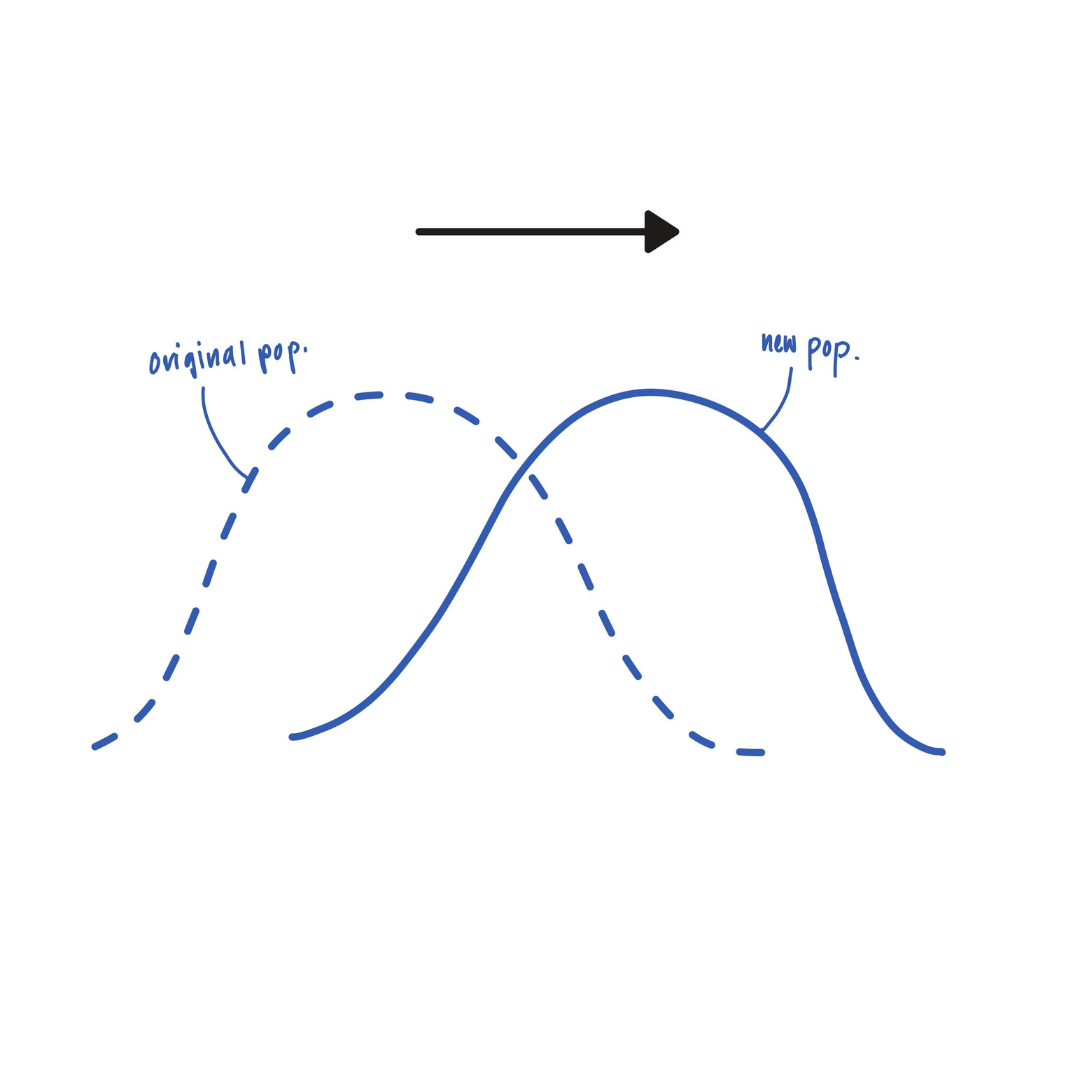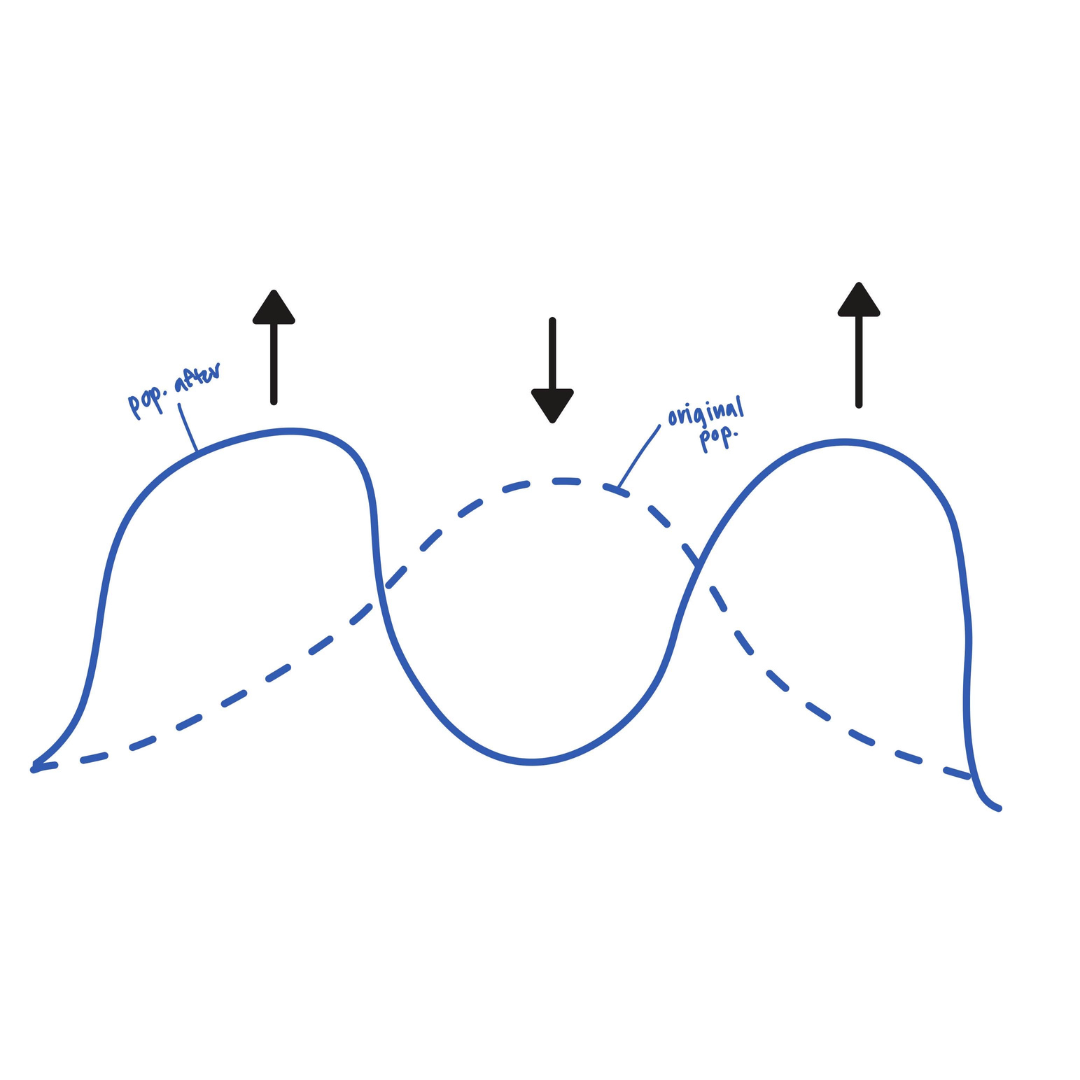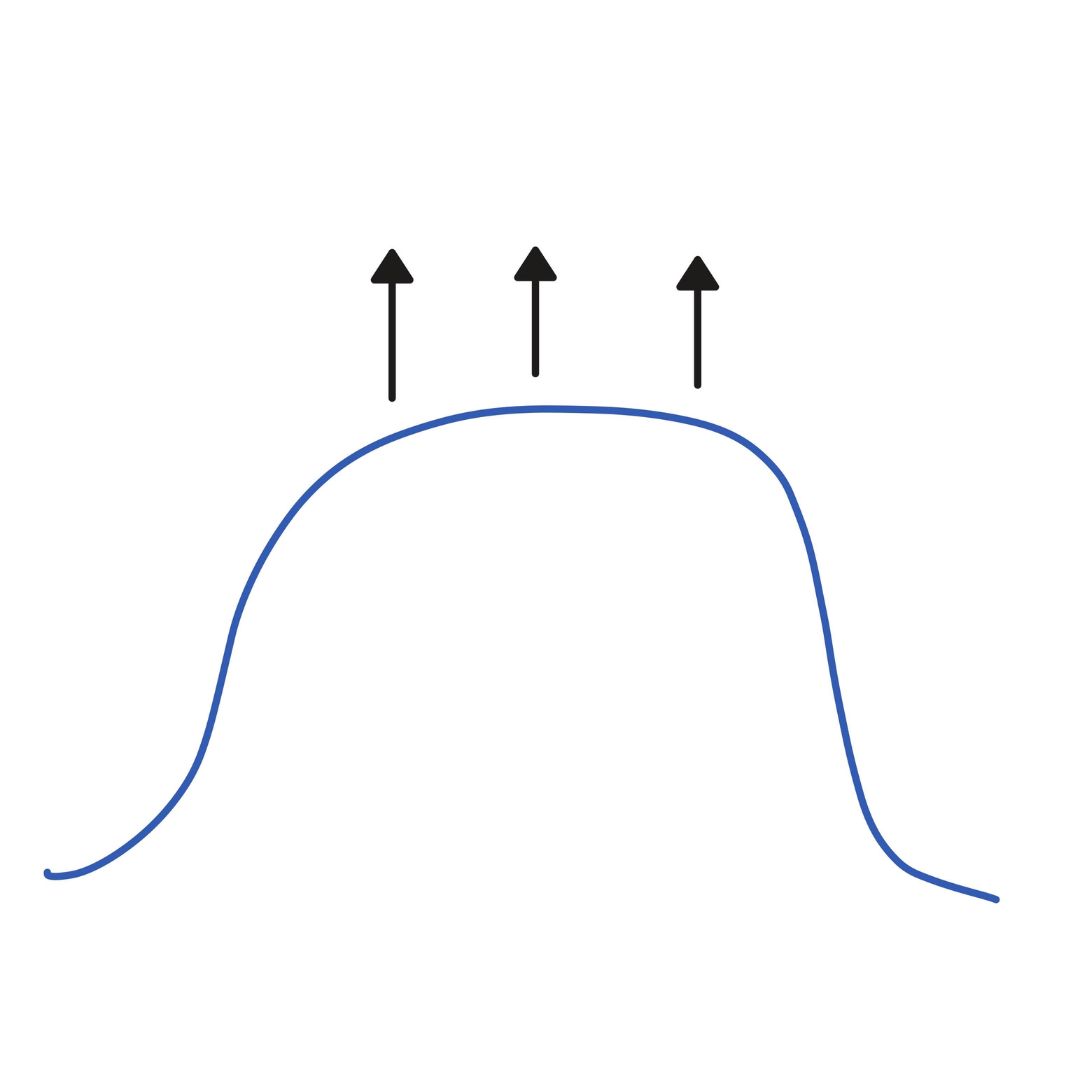Exam 2 | Evolution & Ecology
1/46
Earn XP
Description and Tags
Name | Mastery | Learn | Test | Matching | Spaced |
|---|
No study sessions yet.
47 Terms
What is stabilizing selection?

What is directional selection?

What is disruptive selection?

What is balancing selection?

What’s the difference between monophyletic, paraphyletic, & polyphyletic?
Mono: all descendants of an ancestor & no other organisms. (e.g. grabbed all types of salad)
Para: consists of some—not all—of the descendants of a certain ancestor (e.g. grabbed all salads except the 4 bean salad)
Poly: consists of members with more than 1 recent common ancestor (e.g. grabbed salad, meat, dessert on one plate)
What is taxa?
The latest group that’s alive / extinct in a phylogenetic tree
What is homology?
A trait that’s shared by 2 / more species from the common ancestor (e.g. bats & birds’ wings)
What is homoplasy?
A trait that’s similar not due to a common ancestor (e.g. bats & birds’ ability to fly)
What is an ancestral trait?
A trait that comes from a common ancestor (e.g. crocodillians, lizards, snakes, & turtles all have tails)
What is a devired trait?
A trait that’s not from a common ancestor. Typically differs from their ancestral form (e.g. birds having wings)
What is convergent evolution?
Similar selective pressure that results in similar but independently evolved traits (e.g. fish & dolphins)
What is evolution reversal?
A devired trait that reverts back to a ancestral state (e.g. snakes being legless)
What is polytomy?
Where you don’t know how closely related a species is to another
What is an outgroup?
A closely related group that came earlier in time
What is the biology species concept?
Where a species have a potental to interbreed & they’re reproductively isolated! They cannot reproduce with other groups
What does it mean to define a species morphologically?
It’s where you characterize a species based on its anatomy / appearance (e.g. fossils)
What does it mean to define a species phylogenetically?
It’s where you characterize a species based on a common ancestor — a phylogenetic tree (e.g. bacteria)
What does it mean to define a species ecologically?
it’s where you characterize a species based on its behavior & how it interacts with their environment (e.g. bacteria)
What is the prezygotic barrier where one sub species produces at a certain time compared to the other sub species? (e.g. 1 frog species mates from January to March, but the other mates from March to May)
Temporal
What is the prezygotic barrier where a part of a species moves to another place & no longer interacts with the rest of the species? (e.g. a cricket population gets divided from the rest of the species via flood & now they don’t interact)
Habitat
What is the prezygotic barrier where the absense / presense of a certain behavior prevents reproduction? (e.g. male fireflies use light patterns to attract females, but each fireflies species uses a different light pattern — therefore, females cannot recognize the light pattern)
Behavioral
What is the prezygotic barrier where the gamates (sperm & egg) can’t interact with each other (not due to difference in species)?
Gametic
What is the prezygotic barrier where 2 species cannot interbreed? (e.g. dog & human cannot breed together)
Mechanical
What is the postzygotic barrier where hybrids cannot survive their early stages?
Hybrid inviability
What is the postzygotic barrier where hybrids get birthed, but cannot reproduce?
Hybrid sterility
What is allopatric speciation?
Where a species gets geologically split (e.g. antelope squrrials)
What is the sub-category of allopatric speciation where a physical barrier splits the species?
Vicariance
What is the sub-category of allopatric speciation where a species crosses an already existing barrier & creates a new population?
Dispersal
What is sympatric speciation?
Where a new species arises from the initial species within the same region & with no geological border
What is the sub-category of sympatric speciation where the females choose certain males to reproduce?
Sexual selection
What is the sub-category of sympatric speciation where the offspring has an extra set of chromosomes due to an error in cell machinery & cannot breed?
Polyploidy
What is the sub-category of sympatric speciation where something new gets introduced to the population—a sub population then ends up exploiting said thing, & proceeds to become more isolated and separate?
Habitat differentiation
What is the sub-category of sympatric speciation where a change in one species causes a change in another?
Sequential divergence
What are paralogous genes?
Genes in an organism that originated from a common ancestrlal gene via gene duplication event
What are orthologous genes?
Homogolous genes between 2 species due to a common ancestor
What is a molecular clock & how is it used?
It’s the rate of molecular change for a gene / non-coding region that might be regular & predictable. It’s used by measuring the rate of genetic mutations in DNA (neutral or not) & looking at fossil records
How can existing structures be motified during evolution?
Heterochrony: evolutionary change in rate / timing of developmental events
Neoteny: retention of juvenile traits as an adult
Allometry: changing proportions of body parts / sections
Spacial patterns: rearranging structural features via gene expression, gene duplication, or mutation
Exaptation: a trait evolved for one thing but then used for a different function
What is neoteny?
The retention of juvenile traits in an adult (e.g. axolotyls & keeping their gills that they’ve had forever)
What is allometry?
Where a species changes proportions of body parts / sections (e.g. fiddler crabs & their giant claws they use to attract & wave to females)
What are Hox genes?
A group of related genes that control the basic body plan of an embryo
What is an exaptation?
They’re traits that were evolved for one thing but then used for a completely different function (e.g. panda’s thumb)
What is a vestigial trait?
A leftover trait from ancestors that was evolved in the past but no longer has use (e.g. the human tailbone)
What is an adaptation?
A trait or behavior that helps an organism survive and reproduce
What is the gradualism model?
Where small changes over long periods of time lead to big geographic formations — but in this instance, it leads to big evolutionary changes
What is the punctuated equalibrium model?
Where there’s lots of short bursts of evolutionary change
What is adaptive radiation?
Where a single lineage goes through rapid speciation & ecologicial diversification to form a new species
Does adaptive radiation fit with the punctuated equilibrium model?
True